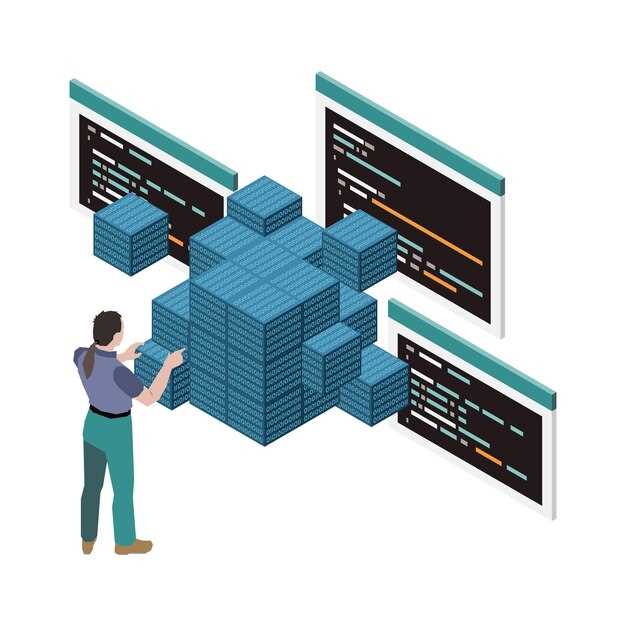Adopt a security-first mindset to fortify your software pipeline against potential threats. Integrating security into every phase of the software development lifecycle ensures robust protection and minimizes vulnerabilities. Start by incorporating automated security testing tools within your continuous integration and continuous deployment (CI/CD) pipeline to identify risks early.
Enable frequent security training for your development and operations teams. This keeps everyone informed about the latest threats and best practices, creating a culture focused on security awareness. Invest in simulated attack exercises and threat modeling to prepare your team for real-world challenges, ensuring a swift and coordinated response to incidents.
Leverage the power of collaboration among all stakeholders. Foster communication between developers, security engineers, and operations teams to streamline security processes. Using shared dashboards and regular security meetings can facilitate transparency and accelerate issue resolution. Encouraging this environment ensures that security is a shared responsibility, reducing the likelihood of oversight.
Integrating Security into the DevOps Workflow

Embed security checks in every phase of the DevOps pipeline to minimize vulnerabilities. Start with incorporating automated security scanning tools early in the coding phase. These tools can identify common vulnerabilities, such as SQL injection or cross-site scripting, during code creation, allowing developers to fix issues on the spot.
Utilize static and dynamic application security testing (SAST and DAST) to catch different types of vulnerabilities. SAST tools review the source code or binaries without execution, while DAST tools test the application during runtime. Combining both provides a comprehensive security overview and reduces false positives.
Implementing a security-focused culture is key. Encourage developers and operations teams to participate in regular security training sessions. These sessions can cover recent threats, secure coding practices, and how to respond to security incidents promptly. A knowledgeable team is the first line of defense.
Regularly update and patch dependencies and libraries. Outdated components are common entry points for attackers. Use tools that automatically alert teams about available updates or known vulnerabilities to maintain the security integrity of your application ecosystem.
| DevOps Phase | Security Integration |
|---|---|
| Code | Automated security scanning tools, secure coding practices |
| Build | Static analysis, dependency checks |
| Test | Dynamic testing, penetration testing drills |
| Release | Security approvals and change management |
| Deploy | Infrastructure security validation |
| Operate | Continuous monitoring, incident response planning |
Finally, integrate security metrics into your CI/CD pipeline dashboard. Monitoring these metrics helps in understanding the security posture over time, ensuring that security remains a focal point throughout the DevOps lifecycle.
How to Embed Security Practices Early in the Development
Implement threat modeling sessions during the initial stages of project planning to identify potential security risks. This proactive approach empowers teams to foresee vulnerabilities and design software with security in mind.
Integrate static application security testing (SAST) tools early in the coding phase. Automating code analysis allows developers to detect security flaws immediately, reducing technical debt and promoting clean, secure codebases.
| Practice | Description |
|---|---|
| Threat Modeling | Conduct sessions at the project’s inception to identify and mitigate potential security threats. |
| Static Application Security Testing (SAST) | Employ SAST tools to automatically analyze code for vulnerabilities during development. |
| Security Requirements | Define security requirements alongside functional requirements to ensure aligned priorities. |
| Continuous Security Training | Provide ongoing security education for development teams to maintain awareness and compliance. |
Develop a culture of continuous security awareness. Regular training and workshops can keep the development team informed on the latest security protocols and common attack vectors, reinforcing the integration of security throughout the software lifecycle.
Include security requirements in product backlogs. By aligning security with business goals from the start, you ensure that the development team treats these as non-negotiable deliverables.
Schedule regular security reviews during development iterations. Frequent check-ins on security practices enable teams to address vulnerabilities quickly, reducing the risk of security breaches in later stages.
Choosing the Right Security Tools for Continuous Integration/Continuous Deployment (CI/CD)
Prioritize integrating security tools right from the initial phases of your CI/CD pipeline. Leverage static application security testing (SAST) tools like OWASP ZAP or SonarQube for early detection of vulnerabilities in your codebase. These tools provide comprehensive insights without affecting your development speed.
- Dynamic Application Security Testing (DAST): Incorporate tools such as Burp Suite or Nessus to perform real-time application security testing against live running applications. These tools mimic real-world attacks ensuring your application withstands various vulnerabilities.
- Software Composition Analysis (SCA): Utilize SCA tools like Dependabot or Black Duck to track open-source component security. Continuous monitoring and updates of third-party packages are essential for maintaining a secure environment.
- Container Security: For teams utilizing containerization, tools like Clair or Trivy can scan container images for vulnerabilities, ensuring that unsafe dependencies don’t make their way into production.
- Secret Management: Implement tools like HashiCorp Vault or AWS Secrets Manager to securely manage sensitive information across your CI/CD process. Automation of secret rotation and access control reduces human error risks.
Anticipate the continuous introduction of new threats by implementing a strategy to regularly update and configure your tools. Aim for a balance between comprehensive security and operational efficiency without introducing significant friction to your development workflow. Collaboratively educate and train your team on the importance of each tool in the context of the CI/CD cycle to enhance security awareness and proactive threat mitigation.
Facilitating Communication Between Development, Operations, and Security Teams
Establish structured meeting routines to ensure effective collaboration between development, operations, and security teams. Regular and well-defined meetings–such as daily stand-ups, weekly check-ins, and monthly reviews–create consistent opportunities for all parties to share updates and address concerns.
- Daily Stand-ups: A brief meeting focused on daily priorities and blockers, ensuring all teams are aware of each other’s current status and immediate needs.
- Weekly Check-ins: Allow for more detailed discussions on progress, enabling mid-term planning and adjustments as needed.
- Monthly Reviews: Gather comprehensive insights, address broader challenges, and evaluate strategic goals against long-term security objectives.
Utilize collaborative tools that offer visibility to all stakeholders. Tools like JIRA, Slack, or Microsoft Teams keep conversations and project updates centralized, accessible, and transparent, which helps bridge communication gaps.
- JIRA: Provides a shared board where tasks are tracked, progress is logged, and responsibilities are clearly defined.
- Slack: Facilitates real-time communication through channels dedicated to specific projects or challenges, reducing email overload.
- Microsoft Teams: Integrates with other Microsoft tools, simplifying file sharing and collaborative editing in a secure environment.
Develop a common vocabulary to minimize misunderstandings. Consistent terminology ensures clarity when discussing aspects of development, operations, and security. This shared language supports quicker decision-making and reduces the risk of miscommunication.
Conduct regular cross-functional training and workshops. These sessions enable team members to understand each other’s priorities, constraints, and workflows. By building empathy and awareness, teams align better with collective goals, such as optimizing security without hindering productivity.
Implement feedback loops to refine processes continually. Encourage team members to provide insights and suggest improvements, fostering an environment where diverse expertise contributes to cohesive progress.
Steps for Automating Security Checks in the Pipeline
Integrate security tools at different stages of the pipeline to catch vulnerabilities early. Start by using static code analysis during the initial coding phase. This helps identify security weaknesses in code before it progresses further.
Incorporate dynamic analysis after deployment in a test environment. These tools simulate real-world attacks by interacting with the running application, uncovering vulnerabilities that static analysis might miss.
Leverage dependency checkers to analyze third-party libraries. Third-party dependencies are often a source of vulnerabilities, so it’s crucial to ensure they are secure and up-to-date.
Implement a container security approach if utilizing container technologies. Use specialized tools to scan container images for vulnerabilities before they are pushed to production. Verify configurations against security benchmarks to maintain a robust security posture.
Establish automated compliance checks. Use infrastructure as code tools, like Terraform or Ansible, to ensure that the configuration adheres to organizational security policies. This prevents misconfigurations which often lead to security incidents.
Create a feedback loop by integrating alerts and reports from security tools with communication and issue-tracking systems like Slack or Jira. This enables quick response and remediation of security issues by development teams.
Regularly update and optimize the security tools and rules based on the threat landscape. Involving all stakeholders in continuous review and improvement ensures that the pipeline adapts to new security challenges effectively.
Addressing Common Security Challenges in DevSecOps
Integrate security checks at every stage of the development pipeline to address common vulnerabilities. Utilize automated security scanning tools early in the CI/CD process to detect potential threats before they escalate. Implement static application security testing (SAST) to analyze source code for known vulnerabilities and dynamic application security testing (DAST) for runtime issues to ensure comprehensive coverage.
Enhance identity and access management by adopting the principle of least privilege. Limit user and system access to the minimum necessary to perform their functions, reducing the risk of unauthorized access. Employ multi-factor authentication to add an extra layer of security in user verification processes.
Regularly update and patch all components in the software pipeline. This includes dependencies, runtime environments, and third-party libraries. Automating these updates can save time and reduce human error. Configure a reliable alert system to notify the team of any new vulnerabilities or updates in dependencies.
Implement a robust incident response plan that outlines clear steps for handling and mitigating breaches. Conduct regular security drills to prepare the team and ensure a swift and efficient response when real incidents occur. An effective response strategy minimizes potential damage and accelerates recovery.
Encourage a culture of security awareness throughout the organization. Conduct regular training sessions and foster open communication between development, security, and operations teams. Making security a shared responsibility ensures that everyone understands the risks and takes proactive measures to secure the software pipeline.
Identifying and Mitigating Vulnerabilities in Open Source Components
Regularly utilize tools like OWASP Dependency-Check, Snyk, or Black Duck to automatically scan open source libraries for known vulnerabilities. Ensure these tools are integrated into your CI/CD pipeline to catch issues early. Establish a policy to prioritize and address vulnerabilities based on severity and impact. Use a patch management strategy to keep open source components up to date, leveraging automation to reduce manual overhead. Maintain an inventory of all open source components, tracking their versions and associated licenses to streamline vulnerability tracking.
Consider using tools like Whitesource or FOSSA to monitor open source compliance and license risks alongside vulnerability assessments. Foster a culture of continuous learning and security awareness by providing developers with regular training sessions on common vulnerabilities in open source software and secure coding practices. Implement isolation techniques, such as containerization, to limit the potential impact of a compromised component. Conduct regular code reviews and security audits to identify potential issues that automated tools might miss.
Engage with the open source community by contributing patches and updates, which not only helps the community but also enhances your understanding of the technologies you rely on. Develop a response plan for vulnerabilities when they are discovered, including communication strategies and timelines for patching. Encourage open communication between development and security teams to ensure that vulnerabilities are swiftly managed and mitigated. Regularly assess and refine your approach to managing open source vulnerabilities to adapt to new threats and technologies.
Developing Robust Incident Response Protocols
Ensure the security team conducts regular threat assessments and vulnerability scans to stay aware of potential risks. Establish a clear communication plan that includes contact details of all crucial stakeholders and incident response team members. Define roles and responsibilities for each team member, ensuring there are no gaps or overlaps in duties during an incident.
Introduce a comprehensive logging and monitoring system that provides real-time data on system activities and anomalies. This helps in quick detection and assessment of any breaches or vulnerabilities. Train personnel regularly to respond effectively to incidents, incorporating lessons learned from past events into regular updates of the incident response plan.
Conduct routine simulations and tabletop exercises to test the protocol, identifying weaknesses and areas for improvement. Implement a post-incident review procedure to analyze the root cause, measure the effectiveness of the response, and gather actionable insights. Create and update documentation systematically, making sure the latest incident response procedures are available and easily accessible to all involved parties.
Utilize automated tools where possible to streamline detection and response processes. These tools can reduce response time and help mitigate damage. Regularly benchmark the organization’s incident response protocols against industry standards to ensure the procedures meet current security challenges and best practices.
Ensuring Compliance with Industry Standards and Regulations
Begin by adopting automated compliance checks directly into your CI/CD pipelines. Tools like OpenSCAP and Chef InSpec can efficiently scan code for compliance issues.
- Integrate compliance as code to continuously monitor policy violations.
- Utilize standardized frameworks such as NIST, ISO, and PCI-DSS for baseline criteria.
- Conduct regular audits using automated tools to ensure adherence to these protocols.
- Implement role-based access control to limit the potential impact of security breaches.
- Stay updated with the latest modifications in regulations through subscriptions to industry newsletters or compliance-specific forums.
- Document policies and procedures clearly to facilitate training and quick onboarding for team members.
Employing encryption for data protection, both at rest and in transit, helps meet regulatory requirements effectively. Leverage services from cloud providers that comply with local and international standards to ensure data integrity.
- Use audit trails and logging mechanisms to track changes and access across systems.
- Engage with legal and compliance experts regularly to address any gaps in current practices.
- Establish a proactive incident response plan covering all potential compliance breaches.
Regular training sessions and workshops can reinforce security and compliance awareness amongst the development and operations teams. Through these strategies, maintaining a secure and compliant software environment will become a seamless aspect of your DevSecOps integration.
Strategies for Continual Security Education and Training
Implement regular workshops where cross-functional teams can tackle simulated security incidents. This hands-on approach engrains security practices into daily work routines and boosts response times during actual threats. Participants gain practical experience, understanding real-world scenarios and refining collaborative skills. Rotate themes to cover various aspects such as threat modeling and secure coding, keeping the content fresh and relevant.
Leverage online platforms offering diverse cybersecurity courses. Allocate dedicated work hours for employees to complete these courses. Many platforms provide certifications upon completion, motivating staff through formal recognition of their skills. Remember, the focus should be on applicable skills that align with current security goals.
Encourage a culture of knowledge sharing by hosting monthly ‘Security Lunch and Learn’ sessions. Team members can present recent learnings or experiences, fostering an environment where security knowledge circulates freely. This informal setting makes the information more digestible and engaging.
Create a security champions program by identifying key individuals in different departments. Provide them with additional training and resources so they can act as points of contact for security-related inquiries. These champions become advocates for secure practices, helping embed security consciousness within the team dynamics.
Utilize gamification to enhance the learning experience. Introduce cybersecurity challenges and competitions internally, rewarding top performers. This method not only makes learning enjoyable but also instills a competitive spirit that drives continuous improvement in security skills.
Finally, solicit feedback regularly to assess the efficacy of training initiatives. Gather insights from participants on what’s effective and what needs improvement, ensuring that education strategies remain aligned with both organizational needs and industry developments. Continuous iteration based on real feedback ensures that training remains impactful and engaging.
Video:
Explaining DevSecOps Engineer FULLY (Is It Right For You?)
Explaining DevSecOps Engineer FULLY (Is It Right For You?)
Q&A:
What is DevSecOps and how does it differ from traditional DevOps?
DevSecOps is an approach that integrates security practices into the DevOps process, aiming to automate and reinforce security throughout the software development lifecycle. Unlike traditional DevOps, which focuses primarily on development and operations, DevSecOps ensures that security is a shared responsibility among all stakeholders from the outset. This helps to identify and address security issues early, reducing the risk of vulnerabilities in the final product.
How can DevSecOps improve the security in the software pipeline without slowing down the development process?
DevSecOps improves security by automating security checks and integrating them within the existing CI/CD pipelines. By doing so, it allows teams to run security tests continuously and in parallel with other development activities. This automated approach helps detect vulnerabilities early, providing faster feedback and reducing the need for resource-intensive, post-development security audits, thereby minimizing any impact on the development timeline.
Which tools are commonly used in a DevSecOps environment?
DevSecOps environments typically use tools designed to support security throughout various stages of the software pipeline. Some popular tools include Jenkins for CI/CD, Docker for containerization, Kubernetes for orchestration, and tools like SonarQube and OWASP ZAP for security testing. Additionally, security-specific tools like Snyk and Twistlock are often integrated to ensure continuous monitoring and vulnerability management.
What role does culture play in successfully implementing DevSecOps?
Culture plays a crucial role in the success of a DevSecOps implementation. It requires a cultural shift where security becomes a priority for everyone involved in the software delivery process. Collaborative communication, shared responsibility for security, and continuous learning are essential aspects. Additionally, promoting a mindset where developers, operations, and security teams work together seamlessly is important for ensuring that security practices are integrated and sustained effectively.



